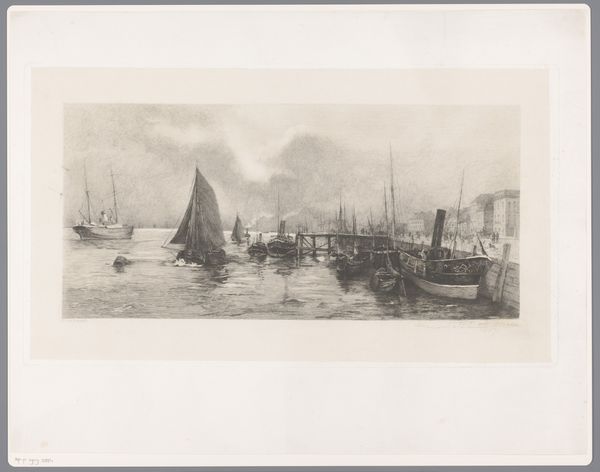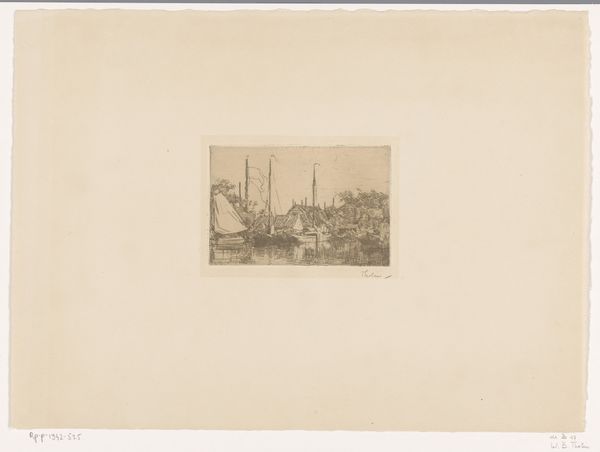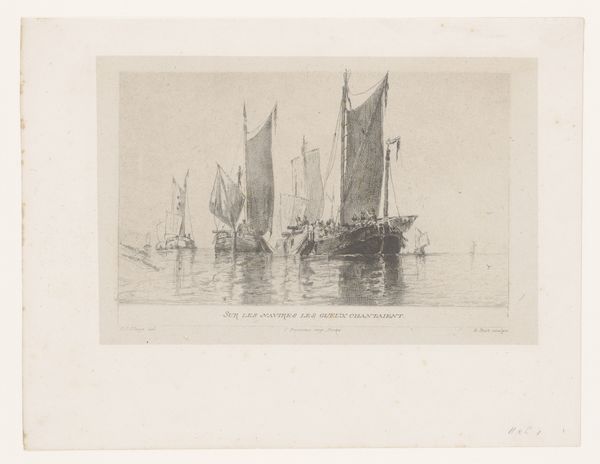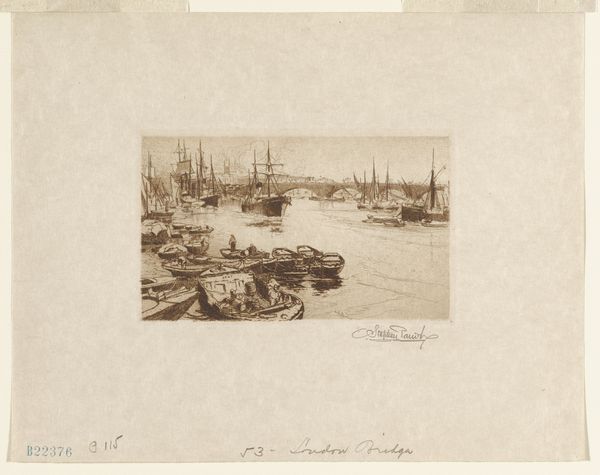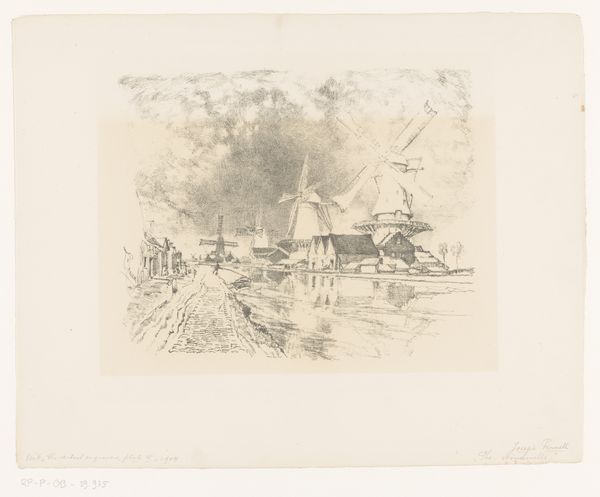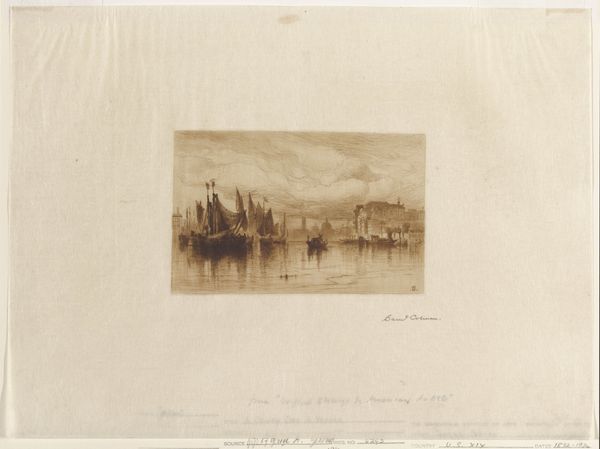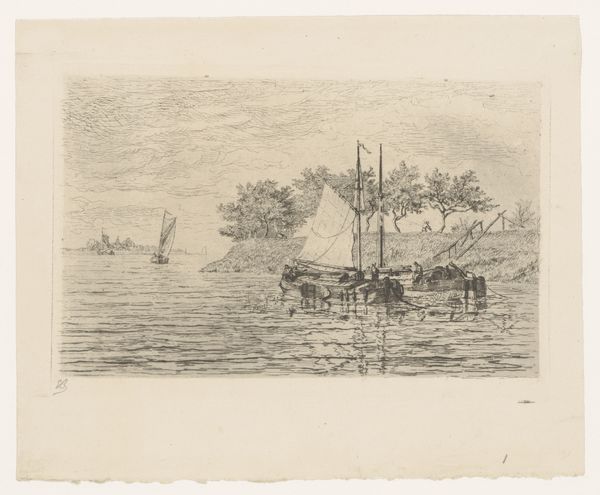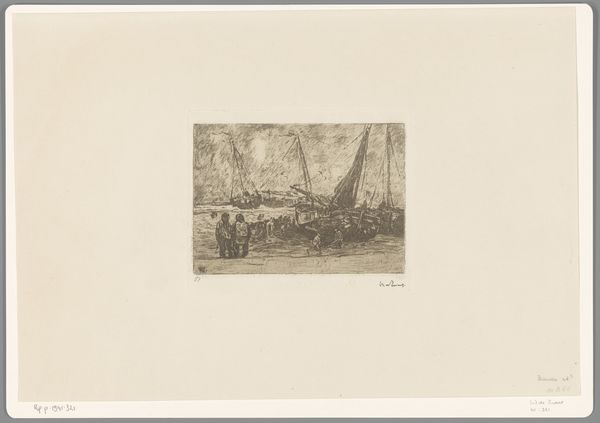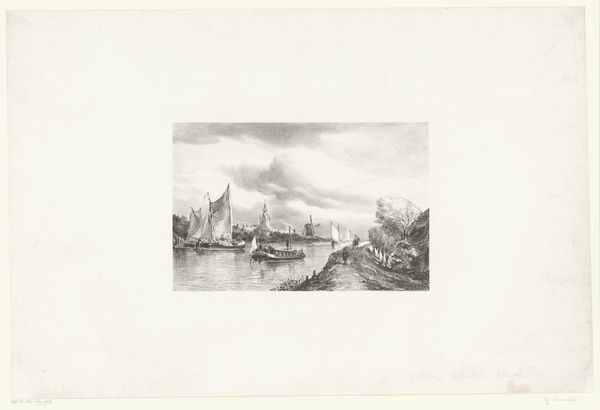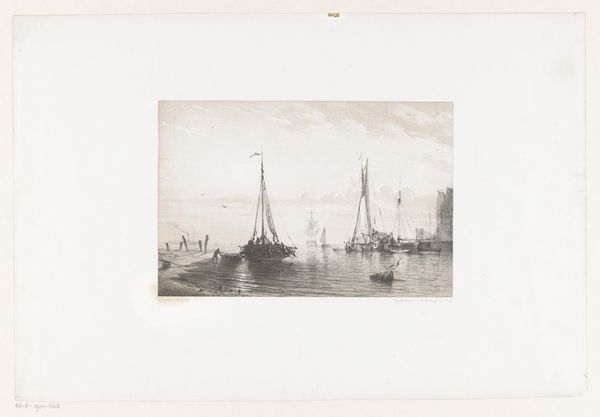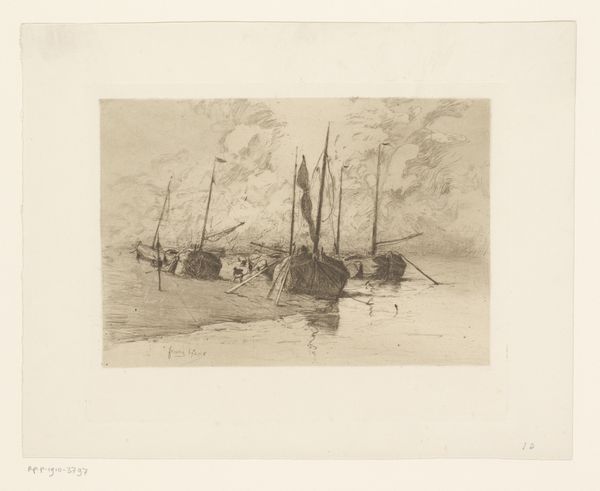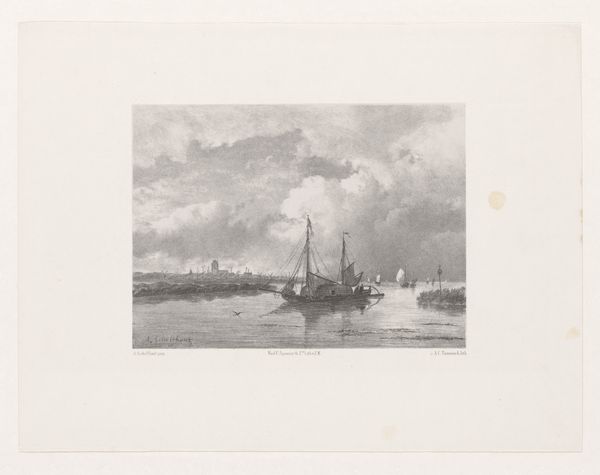
print, etching
#
dutch-golden-age
# print
#
etching
#
landscape
#
realism
Dimensions: height 296 mm, width 518 mm
Copyright: Rijks Museum: Open Domain
Curator: Auguste Danse’s "Havengezicht," created in 1886, presents us with a tranquil harbor scene rendered in delicate etching. The work is currently housed here at the Rijksmuseum. What are your first thoughts? Editor: A pervasive quietude seems to permeate this Dutch harbor. You know, despite all the activity implied, the etching possesses a rather muted quality. It almost feels melancholic. Curator: The linear precision and tonal gradations Danse achieves through etching contribute significantly to that atmospheric effect. Notice how the light dances across the water's surface. What specific formal elements contribute to that mood, would you say? Editor: For me, the absence of vibrant color directs our gaze toward the understated narrative that speaks of labor and commerce. But beyond the technical brilliance, the print reveals more than just aesthetics. It is very possible that these busy ports and waterways also formed avenues of global exchange for enslaved people. The fact is that there is a troubling, sinister undertone to this imagery that reminds me of empire and colonialism. Curator: While such readings are possible, focusing solely on contemporary political perspectives may obscure other valid readings of the artwork. I tend to find the composition masterful – a rhythmic arrangement of boats, piers, and buildings, all contributing to a balanced, visually satisfying whole. The texture and tone communicate both substance and suggestion, I think, within a rather masterful composition. Editor: True, one can appreciate Danse's talent in capturing the realistic reflection of ships in the water through meticulous cross-hatching. But the economic prosperity visualized in that harborscape certainly carries complex, contradictory and often invisible historical baggage. As a tool, it offers a vital lens to interrogate power dynamics and socio-economic inequalities, wouldn’t you agree? Curator: Undoubtedly, considering historical context deepens our comprehension, yet to ignore its intrinsic visual qualities is, perhaps, a disservice. Editor: I'd rather say it enriches! Examining art through intersecting lenses fosters dialogue across periods, revealing obscured histories in images and texts. Curator: Fair point. The true value lies perhaps in integrating various approaches—embracing both the aesthetic form and the broader sociopolitical implications inherent in any given piece.
Comments
No comments
Be the first to comment and join the conversation on the ultimate creative platform.
